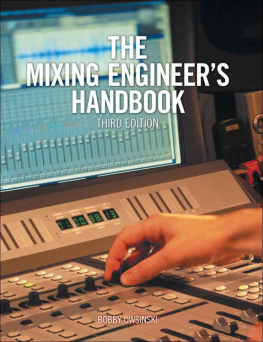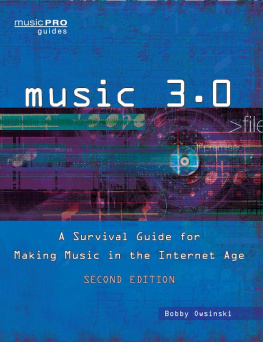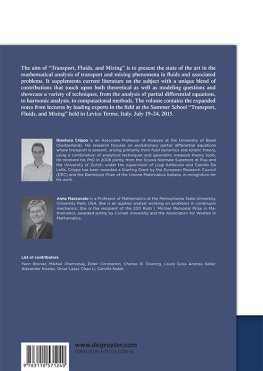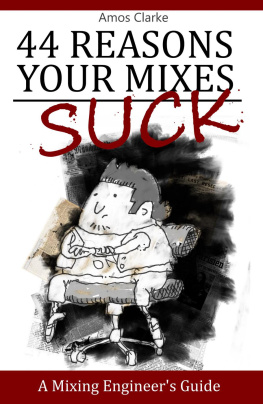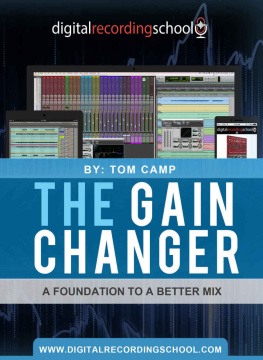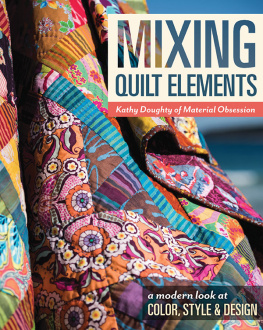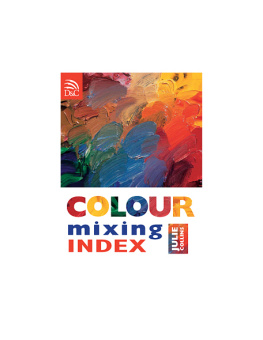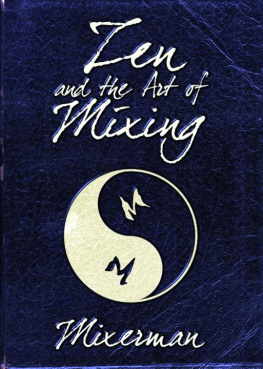The Mixing Engineers Handbook
The Mixing Engineers Handbook
THIRD EDITION
Bobby Owsinski
Course Technology PTR
A part of Cengage Learning

Australia Brazil Japan Korea Mexico Singapore Spain United Kingdom United States

The Mixing Engineers Handbook, Third Edition
Bobby Owsinski
Publisher and General Manager, Course Technology PTR: Stacy L. Hiquet
Associate Director of Marketing: Sarah Panella
Manager of Editorial Services: Heather Talbot
Senior Marketing Manager: Mark Hughes
Acquisitions Editor: Orren Merton
Project Editor/Copy Editor: Cathleen D. Small
Technical Reviewer: Brian Smithers
Interior Layout Tech: MPS Limited
Cover Designer: Mike Tanamachi
Indexer: Sharon Shock
Proofreader: Sue Boshers
2014 Bobby Owsinski.
ALL RIGHTS RESERVED. No part of this work covered by the copyright herein may be reproduced, transmitted, stored, or used in any form or by any means graphic, electronic, or mechanical, including but not limited to photocopying, recording, scanning, digitizing, taping, Web distribution, information networks, or information storage and retrieval systems, except as permitted under Section 107 or 108 of the 1976 United States Copyright Act, without the prior written permission of the publisher.
For product information and technology assistance, contact us at
Cengage Learning Customer & Sales Support, 1-800-354-9706
For permission to use material from this text or product, submit all requests online at
cengage.com/permissions
Further permissions questions can be emailed to
permissionrequest@cengage.com
All trademarks are the property of their respective owners.
All images Bobby Owsinski unless otherwise noted.
Library of Congress Control Number: 2012954876
ISBN-13: 978-1-285-42087-5
ISBN-10: 1-285-42087-X
eISBN-10: 1-285-42088-8
Course Technology, a part of Cengage Learning
20 Channel Center Street
Boston, MA 02210
USA
Cengage Learning is a leading provider of customized learning solutions with office locations around the globe, including Singapore, the United Kingdom, Australia, Mexico, Brazil, and Japan. Locate your local office at: international.cengage.com/region
Cengage Learning products are represented in Canada by Nelson Education, Ltd.
For your lifelong learning solutions, visit courseptr.com
Visit our corporate website at cengage.com
Printed in the United States of America
1 2 3 4 5 6 7 15 14 13
Acknowledgments
Many thanks to all the mixers interviewed for this book who were kind enough to give so freely of their time and expertise. Also, a million thanks to Mike Lawson, who started me in the world of publishing by signing the original version of the book way back when.
About the Author
A longtime music-industry veteran, Bobby Owsinski started his career as a guitar and keyboard player, songwriter, and arranger, eventually becoming an in-demand producer/engineer working not only with a variety of recording artists, but also on commercials, television, and motion pictures. One of the first to delve into surround-sound music mixing, Bobby has worked on more than a hundred surround projects and DVD productions for a variety of superstar acts.
Combining his music and recording experience with an easy-to-understand writing style, Bobby has become one of the bestselling authors in the music-recording industry, with 19 books that are now staples in audio recording, music, and music-business programs in colleges around the world, including the bestselling Mixing Engineers Handbook, The Recording Engineers Handbook, How to Make Your Band Sound Great, and Music 3.0: A Survival Guide for Making Music in the Internet Age. Many of his books have also been turned into video courses that can be found online at lynda.com. Bobby continues to provide presentations, workshops, and master classes at conferences and universities worldwide.
Visit Bobbys production blog at bobbyowsinski.blogspot.com, his Music 3.0 blog at music3point0.blogspot.com, and his website at bobbyowsinski.com.
Contents
Introduction
Welcome to the third edition of The Mixing Engineers Handbook. In the six years since I wrote the second edition and the 13 years since I wrote the original book, the recording industry has truly undergone a huge paradigm shift. Recording budgets have decreased significantly, the number of major studio facilities has dropped to just a handful in each major media center, and the rise of the digital audio workstation has made it possible for just about anyone to make a record at home for a minimal investment.
All the more reason to update this book. Mixing techniques have evolved and adapted to the digital world, and with fewer studios, there are also fewer mentors to learn from. That said, the classic mixing techniques are more useful than ever, since the basics of balance, equalization, compression, and effects never go out of style.
My main goal has always been to preserve these techniques before theyre lost to rumor or twisted into irrelevance. Where once these skills were handed down from engineer to assistant, that whole master-apprentice information exchange has almost faded into oblivion, which is all the more reason to have a single repository of techniques.
For the third edition, Ive added a number of chapters and interviews, updated the interviews from the previous editions, and generally adapted the remaining material so that whats contained herein is much more relevant to todays DAW-based mixing. Since the majority of readers will be working at home in their personal studio, Ive put a special emphasis on how the pros use their DAWs, as well as how they adapt their large-console techniques to the home studio.
Just so you know, the reason why I originally wrote the first edition of this book is probably the same reason why youre reading it: to get better at what I do. I noticed that my mixes were somewhat hit or miss. Sometimes they were great, sometimes just okay, and sometimes just plain off the mark. I also noticed that much of the time my mixes didnt have the big-time sound that I heard on the radio. I wanted this sound badly, and the only way I knew how to get it consistently was to ask questions of the engineers who already knew the secret.
While doing research for this book, I found that a common factor among most great mixers was that they usually all had at least one mentor as a result of coming up through the studio ranks. Most great mixers started as assistants, learned by watching and listening to the greats they helped, and had taken a little from all of them as a result.
I didnt do that, however. Being a musician first and foremost, I learned to engineer thanks to my early interests in electronics, which came from wanting to know how the electrons got from my guitar to the speakers of my amplifier. As I became familiar with the recording studio, I was lucky to be offered all sorts of varied session work, from recording jingles to big band to jazz to R&B to hard rock, but since I never wanted to give up being a musician (which I knew Id have to do), I never took a proper studio job as an assistant to really learn the trade at the hands of the masters. As a result, my recording skills were always pretty good, but my mixing skills were lacking.
Next page
